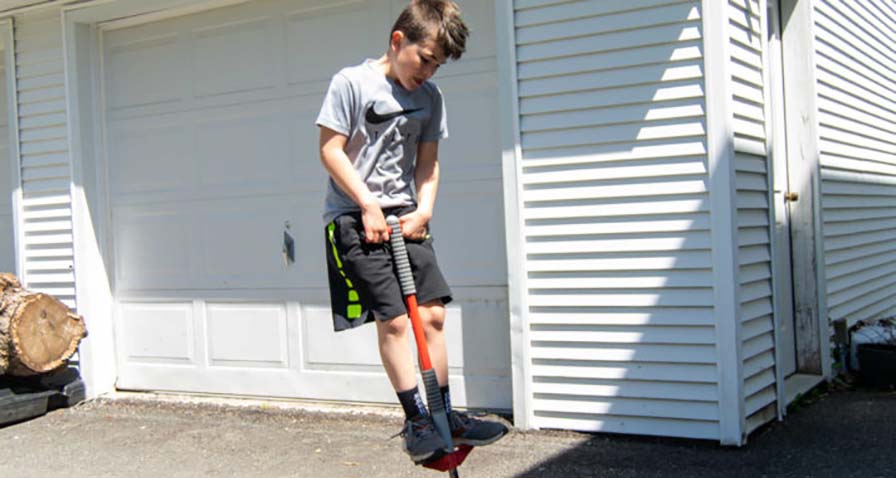Originally published May 25, 2020 in the Bangor Daily News.
By Nina Mahaleris
In the age of remote schooling, physical education is one class that looks very different than it did at the beginning of the year.
As the coronavirus pandemic zeroed in on Maine, P.E. teachers found themselves up against a new challenge: how to keep their students active at home without in-person instruction and very minimal — if any — fitness equipment on hand.
But the pandemic has also driven P.E. teachers to develop new approaches to traditional gym class activities to keep their students moving — and some of those methods may even stick around when schools reopen for good.
Remote learning wasn’t an easy transition, by any means. For the first month or so, grades and coursework took a backseat. Instead, some teachers and school administrators focused on their students’ mental well being, said Wayne Martin, a P.E. teacher at Windham High School. Teachers checked in daily or weekly with their kids, who wrestled with the stress and anxiety of remote learning.
“We thought their mental health was the most important thing in that first month,” said Martin.
In Orono, the Health and P.E. Department was also checking in with students over Google Meet twice a week, but later scaled back to just once a week after realizing kids were struggling to navigate all of their remote class sessions, said Chad Kirkpatrick, who has taught P.E. at Orono schools for nearly 20 years.
Teaching physical education from behind a computer screen was an uphill battle for teachers, too, who had to learn nearly overnight how to amend their curriculums to work for at-home students.
“It’s been really difficult having the personal interaction with students,” said Kirkpatrick. “It’s just not the same.”
Group activities and classwide games, which help kids pick up fundamental motor skills by mimicking their friends or teachers, were no more. For young kids, this is especially difficult, explained Lisa Beaulieu, who teaches P.E. at Old Town Elementary School.
“The kids still like competition and it’s hard to have competition when you’re not in a classroom,” she said.
Beaulieu offers weekly physical challenges and activities for students that are easy to do at home, which teachers can then choose to incorporate into their lessons. Younger students at Old Town Elementary are given “bingo boards” to track their assignments, including what they do for physical activity.
But that leaves behind some gaps for Beaulieu, who can’t always see for herself what the students are doing for P.E. on a day-to-day basis.
“I haven’t had any means of checking in with them … I’m not 100 percent sure that they are doing the activities, so that is a challenge,” she said.
Because they can’t monitor students’ physical exercise in person, some teachers have moved to a more lenient grading scale and now assess activities based on the honor system — hoping that students will just be active.
“We’ve really morphed into a personal fitness-type model,” said Kirkpatrick, adding that assignments have evolved to a more tailored approach depending on what students like to do for exercise.
Teachers have adapted their own lesson plans with help from personalized online educational platforms like FlipGrid, a videocentric system that divides activities into separate categories for students to select from, and Cahoot, a quizzing application.
Similarly, Windham students can pick a physical exercise or activity they want using FlipGrid and then submit a video or photo of them doing it to their teachers for feedback.
Students can choose between things like recreating a TikTok dance, learning to juggle, making origami or doing chores around the house.
“We’re trying to keep it loose and try to keep it fun,” Martin said. “We still like to give kids choices in how they choose to be active.”
Having the flexibility to pick their own activities has also allowed students’ creativity to flourish at home.
Seventh-graders at Orono Middle School recently held their first-ever virtual “Physical Circus,” an annual performance normally put on for elementary students showcasing their physical abilities. Students performed practiced routines — like bicycle tricks, hula hooping and juggling acts — which they recorded and shared with their class online.
One student did a juggling routine using socks she’d folded into one another to substitute juggling balls. Another student, donning a white karate uniform, showed off his kicks while moving carefully across the kitchen floor.
While these online programs have become an important tool during the pandemic, teachers are considering incorporating them into their curriculums even after schools reopen for good.
“Going forward, I think I’m going to use FlipGrid until I retire,” said Martin, noting that the platform could also be used on snow days or when a student needs activities to accommodate a broken bone or other physical limitations.
“It’s gonna change my teaching when we get back to school,” Kirkpatrick said.
Seeking information about IHT's emotional self-regulation program?





